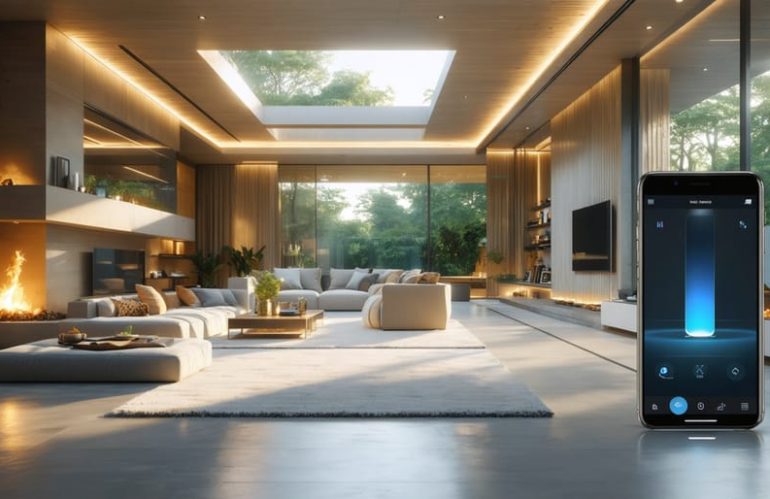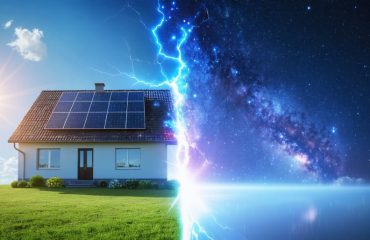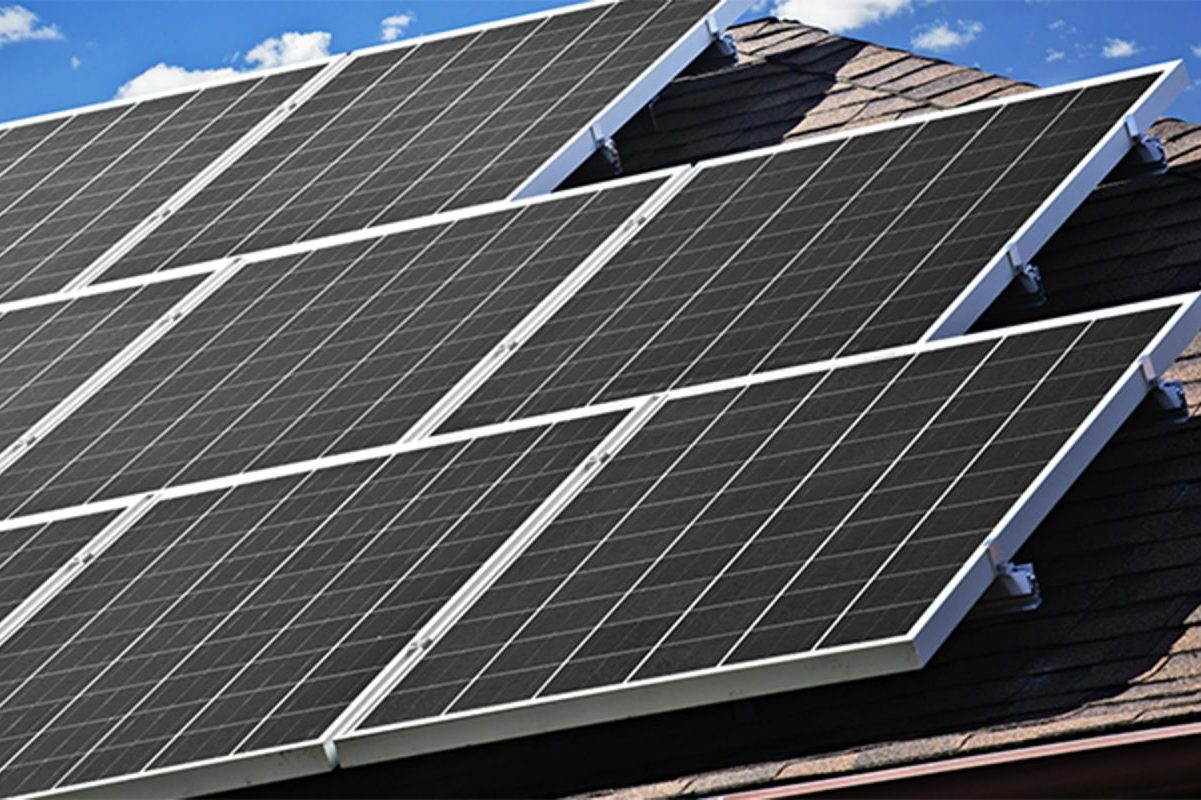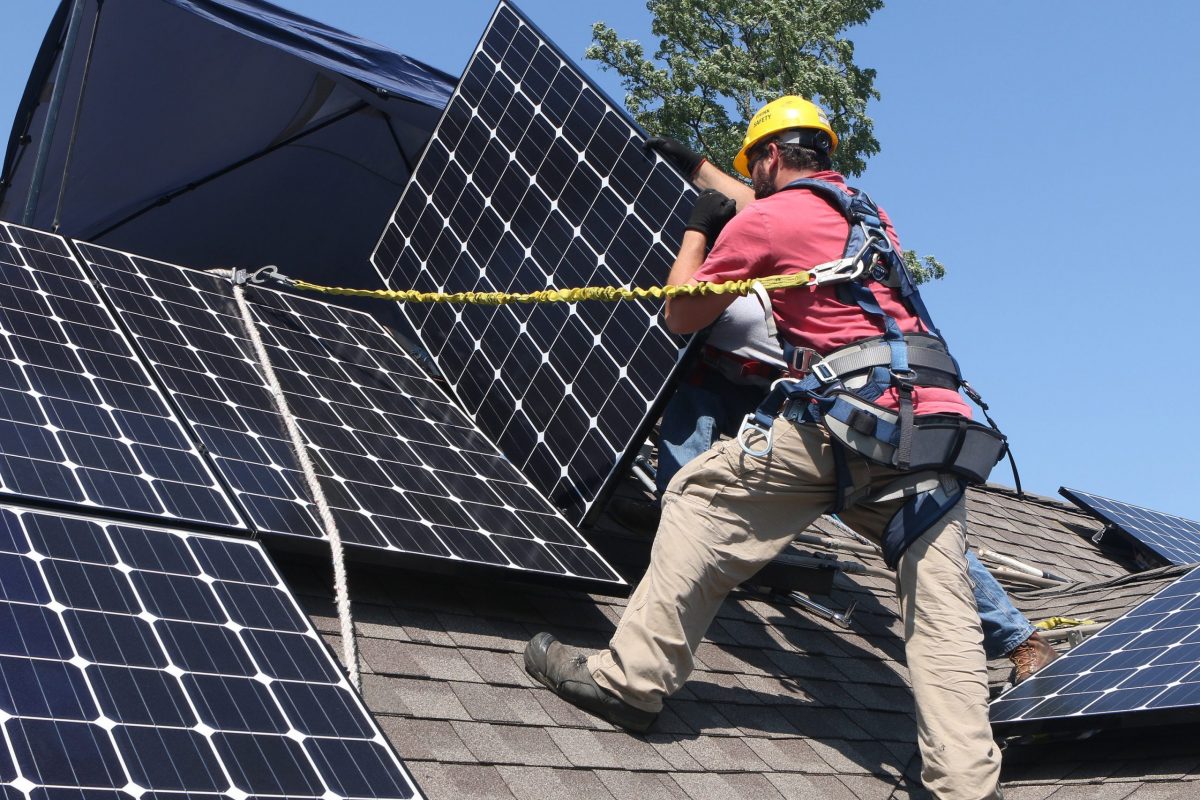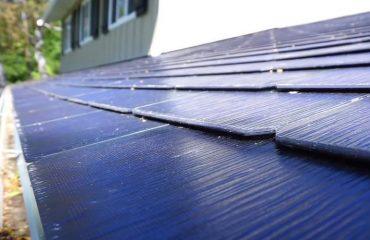Transform your home’s lighting into an eco-friendly powerhouse with solar-powered illumination that slashes electricity bills while brightening your living spaces. Modern solar lighting systems have evolved far beyond basic garden stakes, now offering sophisticated indoor solutions that combine energy independence with smart home functionality. These innovative systems capture free solar energy during daylight hours, storing it in high-capacity batteries to provide reliable, cost-effective lighting throughout your home when darkness falls.
Today’s solar-powered home lights seamlessly integrate with existing home automation systems, offering motion detection, scheduled dimming, and smartphone control capabilities. Whether you’re looking to reduce your carbon footprint, cut energy costs, or ensure reliable lighting during power outages, solar-powered home lights represent a practical investment in sustainable living. With advancing technology driving down costs and improving efficiency, there’s never been a better time to illuminate your home with the power of the sun.
How Solar-Powered Home Lights Transform Your Living Space
Indoor Solar Lighting Solutions
Indoor solar lighting solutions offer innovative ways to bring natural sunlight into your home without traditional windows. Solar tubes and light pipes, also known as sun tunnels, use reflective materials to channel sunlight from your roof directly into interior spaces. These passive systems require no electricity and can illuminate rooms more effectively than traditional skylights.
For spaces where direct sunlight access isn’t possible, battery-powered indoor solar lights provide an excellent alternative. These portable units charge via small solar panels placed near windows or outdoors and store energy for use when needed. Many models offer adjustable brightness levels and motion sensors for enhanced efficiency.
The latest solar light pipes feature advanced prismatic diffusers that spread light evenly throughout rooms, eliminating harsh glare and hot spots. Some systems even include hybrid capabilities, seamlessly switching to LED backup lighting during cloudy days or nighttime hours.
These solutions work particularly well in hallways, bathrooms, and other interior spaces that lack natural light sources. They’re cost-effective alternatives to traditional electrical lighting, requiring minimal maintenance while providing significant energy savings over time.

Outdoor Solar Lighting Options
Outdoor solar lighting offers versatile solutions for enhancing your home’s exterior while maintaining energy efficiency. Security lights, powered by solar panels, provide reliable illumination for entrances, driveways, and vulnerable areas around your property. These motion-activated fixtures offer peace of mind without increasing your electricity bills.
Pathway lighting brings both safety and aesthetics to your outdoor spaces. Solar-powered path lights automatically illuminate walkways, garden paths, and steps as darkness falls. Available in various styles, from sleek modern designs to classic lantern looks, these lights create inviting passages while preventing trips and falls.
For those seeking to add ambiance, decorative solar lights transform outdoor living spaces into enchanting retreats. String lights can create magical overhead canopies, while stake lights add charm to garden beds and landscaping features. Solar-powered spotlights can highlight architectural elements or prized plants, and hanging lanterns bring a warm glow to patios and pergolas.
Most outdoor solar lights are weather-resistant and require minimal maintenance beyond occasional cleaning of the solar panels. With improved battery technology, they now provide reliable illumination even during cloudy periods, making them practical for year-round use.
Smart Integration Features That Matter
Automation and Control Systems
Modern solar-powered home lights seamlessly integrate with smart home automation systems, offering unprecedented control and convenience. Through user-friendly mobile apps, homeowners can easily manage their lighting schedules, adjust brightness levels, and monitor energy consumption from anywhere.
These smart controls allow you to set custom schedules that align with your daily routines. You can program lights to automatically turn on at sunset, dim during late hours, and switch off at sunrise. Many systems also feature motion sensors and occupancy detection, ensuring lights only operate when needed, maximizing energy efficiency.
Voice command compatibility with popular platforms like Alexa and Google Home adds another layer of convenience. You can control your solar lights with simple voice commands or create automated scenes that coordinate multiple lights simultaneously.
Mobile apps provide real-time monitoring of your system’s performance, battery levels, and energy savings. Many apps also offer helpful insights and suggestions to optimize your lighting usage based on your patterns and local weather conditions. Some advanced systems even integrate with weather forecasts to adjust charging schedules and ensure reliable performance during cloudy periods.

Energy Monitoring and Optimization
Modern solar-powered home lights come equipped with smart monitoring systems that help you track and optimize your energy usage effectively. Through user-friendly mobile apps or web interfaces, you can monitor real-time power consumption, battery levels, and lighting schedules. These intelligent systems provide detailed insights into your daily energy patterns, helping you maximize energy savings through data-driven decisions.
Many systems feature automated efficiency controls that adjust brightness based on ambient light conditions or occupancy. You’ll receive notifications about optimal charging times, maintenance needs, and potential system inefficiencies. Some advanced models even integrate with weather forecasting services to optimize charging cycles during peak sunlight hours.
The monitoring dashboard typically displays metrics like energy generated, stored power capacity, and estimated cost savings. This transparency helps you understand your return on investment while maintaining optimal system performance. You can set custom alerts for low battery levels or unusual consumption patterns, ensuring your lights always function when needed.
Regular performance reports help identify opportunities for improvement and verify that your system operates at peak efficiency throughout the year.
Real Cost Benefits of Solar Lighting
Initial Investment vs. Long-term Savings
While the initial cost of solar-powered home lights may seem higher than traditional lighting options, the long-term savings make them an incredibly worthwhile investment. A typical solar light setup for a home can range from $200 to $1,500, depending on the number of fixtures and their features. However, these systems start paying for themselves immediately through eliminated electricity costs.
Most homeowners see a complete return on their investment within 2-3 years. Consider this: a standard outdoor security light consuming 100 watts and running 12 hours daily costs approximately $50-$70 annually in electricity. By switching to solar, this cost drops to zero, and you’ll continue saving year after year.
The financial benefits extend beyond direct energy savings. Solar-powered lights require minimal maintenance, with bulbs lasting 5-7 years on average. Their batteries typically need replacement every 3-5 years, costing around $20-30 per light. These maintenance costs are significantly lower than traditional lighting systems, which often require more frequent bulb replacements and professional electrical work.
Additionally, many regions offer tax incentives and rebates for installing solar lighting systems, further reducing the initial investment. When combined with increased property value and reduced carbon footprint, solar-powered home lights represent a smart financial decision that keeps giving back over time.
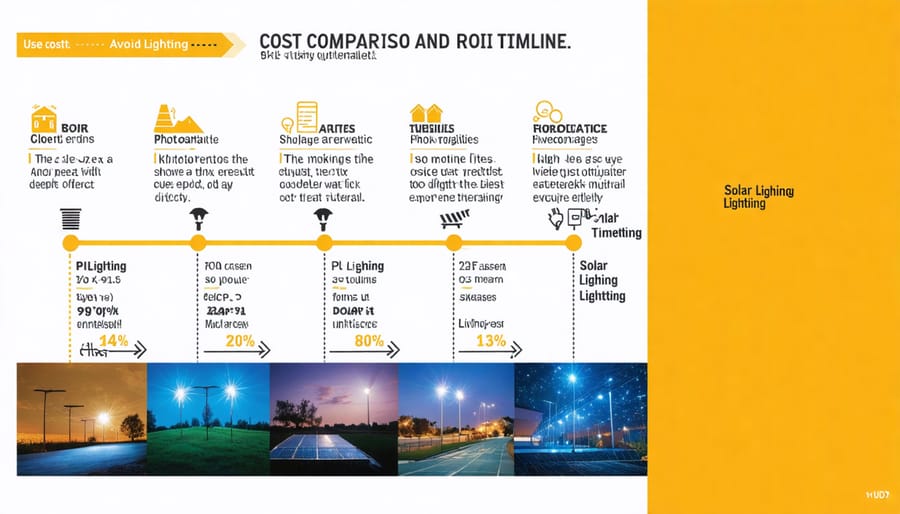
Available Incentives and Rebates
Installing solar-powered home lights becomes even more attractive when you consider the numerous financial incentives available. The federal government offers substantial solar energy tax credits that can cover up to 30% of your installation costs through 2032. This significant savings opportunity makes the transition to solar lighting more affordable than ever.
Many states offer additional incentives, including property tax exemptions, sales tax exemptions, and performance-based incentives. Local utility companies frequently provide rebates and grants for homeowners who install solar-powered lighting systems, particularly when integrated with smart home technology.
Some municipalities have created special financing programs, such as Property Assessed Clean Energy (PACE), allowing homeowners to finance solar installations through their property taxes. Many local governments also offer expedited permits and reduced fees for solar installations.
Energy companies often provide net metering programs, enabling homeowners to earn credits for excess power generated by their solar systems. Some areas even offer Solar Renewable Energy Certificates (SRECs), which can be sold for additional income.
To maximize your savings, consider combining multiple incentives. Check with your local utility provider, state energy office, and municipal government to identify all available programs in your area. Remember that incentives can change annually, so acting sooner rather than later ensures you get the best possible financial benefits.
Installation and Maintenance Made Simple
Installing solar-powered home lights is simpler than you might think, and with proper maintenance, they can serve you reliably for years. Most systems come with clear mounting brackets and straightforward wiring connections that even DIY enthusiasts can handle. However, if you’re not confident with electrical work, it’s always wise to consult a professional installer.
Start by choosing optimal locations for your solar panels – areas that receive direct sunlight for most of the day, typically south-facing spots in the Northern Hemisphere. The light fixtures themselves can be mounted similarly to traditional lighting, while the solar panels should be secured firmly to prevent wind damage.
Maintenance is remarkably straightforward. Clean your solar panels every few months using plain water and a soft cloth to remove dust and debris that might reduce efficiency. During winter, ensure panels are free from snow accumulation. Check wiring connections annually for signs of wear or damage, and replace batteries in standalone units every 2-3 years.
Most modern solar lights include built-in sensors that automatically adjust brightness based on available charge, making daily operation completely hands-free. Keep an eye on performance during the first few weeks after installation to ensure everything is working as expected. If you notice reduced brightness or shorter operating times, a simple battery check or panel cleaning usually resolves the issue.
Remember to keep trees trimmed to prevent shading of your panels, and consider adjusting panel angles seasonally for optimal sunlight capture.
Solar-powered home lights represent a smart investment in both your home’s future and our planet’s well-being. By harnessing clean, renewable energy from the sun, these lighting solutions offer significant cost savings on your electricity bills while reducing your carbon footprint. The combination of advanced LED technology, smart features, and solar power creates a sustainable, efficient lighting system that enhances both your home’s functionality and its value. Making the switch to solar-powered lighting isn’t just about being environmentally conscious – it’s about embracing a practical, forward-thinking solution that pays for itself over time. Take the first step toward a brighter, more sustainable future by exploring solar lighting options for your home today. With minimal maintenance requirements and maximum benefits, solar-powered home lights are truly illuminating the path to smarter, greener living.

